Opinion & Analysis
Where does the golf ball go from here?

According to an unusual statistic I came across recently there are 2,378 golf balls in the air during any given second around the world. Or to extend that out, it equates to 75 billion seconds of golf ball “airtime” per year. So it’s true golf balls play a significant role to golfers.
Right now there’s a lot of buzz in the ball market with big claims being made from a raft of new entrants. New models claim to be longer off the tee and offer more spin from short range while suppling buttery softness and feel. The industry standard premium ball, Titleist’s Pro V1, has consistently led the way in terms of performance since its launch in 2000. Bridgestone, Callaway, Srixon and TaylorMade are also competing at the top end of the market, which is defined at up to $4 per ball.
But imagine getting all that performance at a fraction of that price? Golfers are starting to sit up and take notice. Should Titleist and the other premium golf ball manufacturers be quaking in their corporate boots? And where does golf ball evolution go from here?
Who Makes the Best Golf Balls?
The ideal ball is one that maximizes distance through low spin with the driver, minimizes the effect of wind, stays straight on off-center hits and spins when it hits the green and offer the right feel.
If you ask Tiger Woods what the best golf balls are, he would say Bridgestone (he’s a brand endorser and uses the company’s B330S). Jordan Speith would say Titleist (he uses a ProV1x) and Phil Mickelson would say Callaway (he uses a Chrome Soft). If you ask a 20-handicap golfer the same question, he or she would probably say any number of brands and balls. And it’s not simply an endorsement issue; it comes down to the requirements of the player. In other words, what ball best suits a golfer’s needs in terms of performance… and of course, what’s the price?
It’s kind of like asking who makes the best beer. It’s a topic that sparks ongoing debate in bars all round the world, because everyone has their own favorite. It’s the same with golf balls. Brand loyalty and marketing play a big part in a golfer’s purchasing decision, and improvements in technology have made “the best ball” hard to define.
One thing is for sure, the market is certainly evolving. With the news that Rory McIlroy has chosen to return to Titleist’s Pro V1x golf ball and Bubba Watson will play Volvik’s S4 in pink, we are seeing success by both new and old brands.
Trending Technologies
There is so much technology behind golf balls these days. Polymers and associated materials are advancing at rapid rates, and computer aided design is enabling a better understanding of aerodynamics and performance. Manufacturing is getting more sophisticated and ball-testing technology can optimize the effects of dimples size and shape, spin, attack angles and aerodynamics.
The theory that every player is different is substantiated by Bridgestone, which has invested heavily in its golf-ball testing research and has more than two million swings in its database.
“Getting fitted for your ball is like getting fitted for your driver,” says Adam Rehberg, Bridgestone’s Head of Golf Ball Fitting. “Swing speed, launch angles and spin rates will point you toward a specific ball to optimize your goals. We are very enthusiastic at Bridgestone, as we don’t just make one ball. We are constantly pushing boundaries, and being part of a conglomerate, Bridgestone Golf balls has access to a ton of R&D from Bridgestone Tires. Polymers being used on tires today will undoubtedly be put into play by Bridgestone Golf.”
One Ball for One Swing?
According to Bridgestone’s swing database research, we are all different and swing a golf club differently.
“We gather real golfer data, not just generated from a robot,” Rehberg says. “We realize that people will not hit the ball perfectly. They will have different swing speeds, attack angles and face angles. Golfers should play a profile of ball that meets their needs that will optimize their performance, be that a slower swing speed or better feel round the green.”
But this tee-to-green strategy is different from Titleist’s recent advertising campaigns that say either its Pro V1 or Pro V1x will be the best-performing Titleist golf ball for golfers whatever their level of play.
Titleist takes a green-to-tee approach in its golf ball development and fitting, which involves an evaluation of all shots on the golf course. The greatest emphasis is placed on shots into and around the green, because “the golf ball that performs best on these shots is your key to lower scores,” the company says.
“Many golfers are led to believe they should be fit for a golf ball based solely on their driver swing speed,” the company says. “This is a flawed approach. The truth is golfers use a wide range of swing speeds to execute the vast array of shots required in every round. The golf ball must perform with every club, at every speed, on every shot.”
So in theory, a 20-handicap golfer can play exactly the same ball as their golfing idol does. But who is right?
New Players in the Market
In recent years, the golf ball industry has become packed with new entrants and existing companies that have created an ever-expanding array of models. New players like Vice, Snell, MG and Kirkland are offering urethane-covered golf balls at significantly lower prices. Test data and on-course feedback from golfers suggest that the technology gap is narrowing and more direct-to-market channels enable these companies to reduce overheads.
Judging by some social media-generated player feedback and by sales of these new entrants, golfers are buying into the price-performance deal. And then you have companies like Volvik with their new S3/S4 balls available now in different colors, not to mention Callaway’s success with its Chrome Soft Truvis golf balls, which have soccer ball-like graphics and sold so well Callaway struggled to meet demand.
New Ways to Buy Balls
Balls are also more likely to be bought online rather than through a pro shop these days.
“Trends are showing that consumers are more comfortable buying stuff on their mobile devices” said Elliot Mellow, Bridgestone’s Head of Golf Ball Fitting. “We have changed our channel model selling more direct online through our own website and partner websites and anticipate that to grow.”
It’s easy to see how technology can push down golf ball prices. There are already scenarios in the future that see a drone delivering a consignment of balls to the first tee before you play, presumably ordered on your smart phone that day.
The Golf Ball of the Future
So how will the golf ball of the future differ? It took 200 years for the featherie to make it to the guttie. How long will we have to wait for the next generation breakthrough?
Talking to Dean Snell is a fascinating insight into ball technology, history and engineering. He worked at Titleist to develop the Pro V1 and then at TaylorMade to design its Penta golf balls. Now he heads up his own golf ball company, Snell Golf, and is adamant that the ball regulations are so tight now that the distance feature has been maxed out.
“The area to focus in on now is from 150 yards and in,” he said. “And essentially that means spin rates.” And he doesn’t just focus on balls for pro golfers. At TaylorMade, he was behind its Noodle, Burner, RocketBallz and Project (a) golf balls, which were designed to perform for average golfers.
Snell says many golfers are being mis-sold on the concept that they need a lower-compression ball for slower swing speeds, believing that it will give them greater distance.
“Based on a 100 mph swing hitting the ball 250 yards, a low-compression ball will only add about one extra yard of distance compared to a higher compression ball,” he says. “But this tiny pick-up in distance is completely offset with lack of feel and ability to spin the ball on or around the green. In order to get enough backspin, you have to have a big enough contact area and you have to have the cover going into the grooves. A very hard ball, even if it had a soft cover, it wouldn’t be interacting with very many grooves, so you do actually need it to deform a certain amount.”
Bridgestone, on the other hand, is adamant it can help golfers hit the ball farther.
“We have invested a lot of R&D research into aerodynamics,” Elliot says. “Our ‘Dual-Dimple Pattern’ will offer less drag and shallow out the landing angle for more roll-out. We will be introducing a new dimple in 2017 that will also add stability and added forgiveness. In addition, we see next generation advances in the ball core. We are moving to a gradational-compression core technology. This will offer one-piece performance, but act like a dual core. We see this offering significant added distance.”
The ball of the future may also be optically different, be it in color or design. Like Volvik and Callaway, Bridgestone representatives see the value of color in certain ball segments, but they say it less than 5 percent of total sales. But they’re working on something novel as well.
“We are always looking at ways to help the golfer and I have a new optics-driven concept ball sitting in my desk right now that we are very excited about,” Elliot says. “It will be very different than anything else on the market. It is still in the R&D stage and will involve a different manufacturing process, but it could be available on the market in 2017.”
Is It All Just a Load of Balls?
Lots of golfers couldn’t care less about what ball they play, especially if they are at the beginner or less-advanced stage. Given that they will be donating a lot of balls per round to the local wildlife, they want something that delivers price performance. After all, they can hit a TaylorMade just as far into the woods as they can hit a Top Flight. But there are differences in performance between brands and models. How much of it is a placebo effect? We all love our golf brands and are passionate about how much superior they are to the competition… but we say the same about our beer, our cars, our phones and everything else.
To succeed in the golf ball business is all about winning user acceptance and distribution. The barriers to entry have diminished a lot over the last 10 years. If Microsoft or Apple decided to muscle in, it would become very interesting indeed.
So you can wrap yourself up in all the ball technology you want. Heck, I’m a lifelong marketing guy; I know how it all works. But the truth is play the ball you’re most comfortable using, one that matches your skill level, personality and pocket.
Bubba summed it up pretty well in his recent signing with Volvik. “As long as the performance differences are not huge, I can have a lot more fun hitting a pink golf ball, so why not?”
Opinion & Analysis
The 2 primary challenges golf equipment companies face

As the editor-in-chief of this website and an observer of the GolfWRX forums and other online golf equipment discourse for over a decade, I’m pretty well attuned to the grunts and grumbles of a significant portion of the golf equipment purchasing spectrum. And before you accuse me of lording above all in some digital ivory tower, I’d like to offer that I worked at golf courses (public and private) for years prior to picking up my pen, so I’m well-versed in the non-degenerate golf equipment consumers out there. I touched (green)grass (retail)!
Complaints about the ills of and related to the OEMs usually follow some version of: Product cycles are too short for real innovation, tour equipment isn’t the same as retail (which is largely not true, by the way), too much is invested in marketing and not enough in R&D, top staffer X hasn’t even put the new driver in play, so it’s obviously not superior to the previous generation, prices are too high, and on and on.
Without digging into the merits of any of these claims, which I believe are mostly red herrings, I’d like to bring into view of our rangefinder what I believe to be the two primary difficulties golf equipment companies face.
One: As Terry Koehler, back when he was the CEO of Ben Hogan, told me at the time of the Ft Worth irons launch, if you can’t regularly hit the golf ball in a coin-sized area in the middle of the face, there’s not a ton that iron technology can do for you. Now, this is less true now with respect to irons than when he said it, and is less and less true by degrees as the clubs get larger (utilities, fairways, hybrids, drivers), but there remains a great deal of golf equipment truth in that statement. Think about it — which is to say, in TL;DR fashion, get lessons from a qualified instructor who will teach you about the fundamentals of repeatable impact and how the golf swing works, not just offer band-aid fixes. If you can’t repeatably deliver the golf club to the golf ball in something resembling the manner it was designed for, how can you expect to be getting the most out of the club — put another way, the maximum value from your investment?
Similarly, game improvement equipment can only improve your game if you game it. In other words, get fit for the clubs you ought to be playing rather than filling the bag with the ones you wish you could hit or used to be able to hit. Of course, don’t do this if you don’t care about performance and just want to hit a forged blade while playing off an 18 handicap. That’s absolutely fine. There were plenty of members in clubs back in the day playing Hogan Apex or Mizuno MP-32 irons who had no business doing so from a ballstriking standpoint, but they enjoyed their look, feel, and complementary qualities to their Gatsby hats and cashmere sweaters. Do what brings you a measure of joy in this maddening game.
Now, the second issue. This is not a plea for non-conforming equipment; rather, it is a statement of fact. USGA/R&A limits on every facet of golf equipment are detrimental to golf equipment manufacturers. Sure, you know this, but do you think about it as it applies to almost every element of equipment? A 500cc driver would be inherently more forgiving than a 460cc, as one with a COR measurement in excess of 0.83. 50-inch shafts. Box grooves. And on and on.
Would fewer regulations be objectively bad for the game? Would this erode its soul? Fortunately, that’s beside the point of this exercise, which is merely to point out the facts. The fact, in this case, is that equipment restrictions and regulations are the slaughterbench of an abundance of innovation in the golf equipment space. Is this for the best? Well, now I’ve asked the question twice and might as well give a partial response, I guess my answer to that would be, “It depends on what type of golf you’re playing and who you’re playing it with.”
For my part, I don’t mind embarrassing myself with vintage blades and persimmons chasing after the quasi-spiritual elevation of a well-struck shot, but that’s just me. Plenty of folks don’t give a damn if their grooves are conforming. Plenty of folks think the folks in Liberty Corner ought to add a prison to the museum for such offences. And those are just a few of the considerations for the amateur game — which doesn’t get inside the gallery ropes of the pro game…
Different strokes in the game of golf, in my humble opinion.
Anyway, I believe equipment company engineers are genuinely trying to build better equipment year over year. The marketing departments are trying to find ways to make this equipment appeal to the broadest segment of the golf market possible. All of this against (1) the backdrop of — at least for now — firm product cycles. And golfers who, with their ~15 average handicap (men), for the most part, are not striping the golf ball like Tiger in his prime and seem to have less and less time year over year to practice and improve. (2) Regulations that massively restrict what they’re able to do…
That’s the landscape as I see it and the real headwinds for golf equipment companies. No doubt, there’s more I haven’t considered, but I think the previous is a better — and better faith — point of departure when formulating any serious commentary on the golf equipment world than some of the more cynical and conspiratorial takes I hear.
Agree? Disagree? Think I’m worthy of an Adam Hadwin-esque security guard tackle? Let me know in the comments.
@golfoncbs The infamous Adam Hadwin tackle ? #golf #fyp #canada #pgatour #adamhadwin ? Ghibli-style nostalgic waltz – MaSssuguMusic
Podcasts
Fore Love of Golf: Introducing a new club concept

Episode #16 brings us Cliff McKinney. Cliff is the founder of Old Charlie Golf Club, a new club, and concept, to be built in the Florida panhandle. The model is quite interesting and aims to make great, private golf more affordable. We hope you enjoy the show!
Opinion & Analysis
On Scottie Scheffler wondering ‘What’s the point of winning?’

Last week, I came across a reel from BBC Sport on Instagram featuring Scottie Scheffler speaking to the media ahead of The Open at Royal Portrush. In it, he shared that he often wonders what the point is of wanting to win tournaments so badly — especially when he knows, deep down, that it doesn’t lead to a truly fulfilling life.
View this post on Instagram
“Is it great to be able to win tournaments and to accomplish the things I have in the game of golf? Yeah, it brings tears to my eyes just to think about it because I’ve literally worked my entire life to be good at this sport,” Scheffler said. “To have that kind of sense of accomplishment, I think, is a pretty cool feeling. To get to live out your dreams is very special, but at the end of the day, I’m not out here to inspire the next generation of golfers. I’m not out here to inspire someone to be the best player in the world, because what’s the point?”
Ironically — or perhaps perfectly — he went on to win the claret jug.
That question — what’s the point of winning? — cuts straight to the heart of the human journey.
As someone who’s spent over two decades in the trenches of professional golf, and in deep study of the mental, emotional, and spiritual dimensions of the game, I see Scottie’s inner conflict as a sign of soul evolution in motion.
I came to golf late. I wasn’t a junior standout or college All-American. At 27, I left a steady corporate job to see if I could be on the PGA Tour starting as a 14-handicap, average-length hitter. Over the years, my journey has been defined less by trophies and more by the relentless effort to navigate the deeply inequitable and gated system of professional golf — an effort that ultimately turned inward and helped me evolve as both a golfer and a person.
One perspective that helped me make sense of this inner dissonance around competition and our culture’s tendency to overvalue winning is the idea of soul evolution.
The University of Virginia’s Division of Perceptual Studies has done extensive research on reincarnation, and Netflix’s Surviving Death (Episode 6) explores the topic, too. Whether you take it literally or metaphorically, the idea that we’re on a long arc of growth — from beginner to sage elder — offers a profound perspective.
If you accept the premise literally, then terms like “young soul” and “old soul” start to hold meaning. However, even if we set the word “soul” aside, it’s easy to see that different levels of life experience produce different worldviews.
Newer souls — or people in earlier stages of their development — may be curious and kind but still lack discernment or depth. There is a naivety, and they don’t yet question as deeply, tending to see things in black and white, partly because certainty feels safer than confronting the unknown.
As we gain more experience, we begin to experiment. We test limits. We chase extreme external goals — sometimes at the expense of health, relationships, or inner peace — still operating from hunger, ambition, and the fragility of the ego.
It’s a necessary stage, but often a turbulent and unfulfilling one.
David Duval fell off the map after reaching World No. 1. Bubba Watson had his own “Is this it?” moment with his caddie, Ted Scott, after winning the Masters.
In Aaron Rodgers: Enigma, reflecting on his 2011 Super Bowl win, Rodgers said:
“Now I’ve accomplished the only thing that I really, really wanted to do in my life. Now what? I was like, ‘Did I aim at the wrong thing? Did I spend too much time thinking about stuff that ultimately doesn’t give you true happiness?’”
Jim Carrey once said, “I think everybody should get rich and famous and do everything they ever dreamed of so they can see that it’s not the answer.”
Eventually, though, something shifts.
We begin to see in shades of gray. Winning, dominating, accumulating—these pursuits lose their shine. The rewards feel more fleeting. Living in a constant state of fight-or-flight makes us feel alive, yes, but not happy and joyful.
Compassion begins to replace ambition. Love, presence, and gratitude become more fulfilling than status, profits, or trophies. We crave balance over burnout. Collaboration over competition. Meaning over metrics.
Interestingly, if we zoom out, we can apply this same model to nations and cultures. Countries, like people, have a collective “soul stage” made up of the individuals within them.
Take the United States, for example. I’d place it as a mid-level soul: highly competitive and deeply driven, but still learning emotional maturity. Still uncomfortable with nuance. Still believing that more is always better. Despite its global wins, the U.S. currently ranks just 23rd in happiness (as of 2025). You might liken it to a gifted teenager—bold, eager, and ambitious, but angsty and still figuring out how to live well and in balance. As much as a parent wants to protect their child, sometimes the child has to make their own mistakes to truly grow.
So when Scottie Scheffler wonders what the point of winning is, I don’t see someone losing strength.
I see someone evolving.
He’s beginning to look beyond the leaderboard. Beyond metrics of success that carry a lower vibration. And yet, in a poetic twist, Scheffler did go on to win The Open. But that only reinforces the point: even at the pinnacle, the question remains. And if more of us in the golf and sports world — and in U.S. culture at large — started asking similar questions, we might discover that the more meaningful trophy isn’t about accumulating or beating others at all costs.
It’s about awakening and evolving to something more than winning could ever promise.


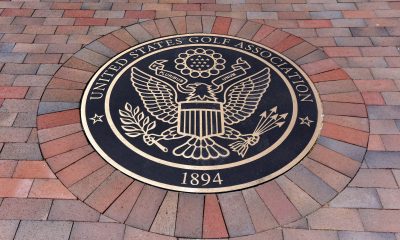



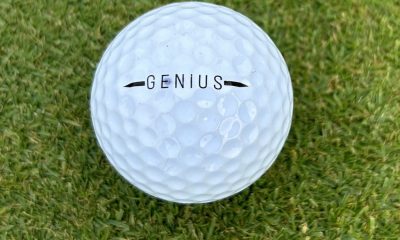

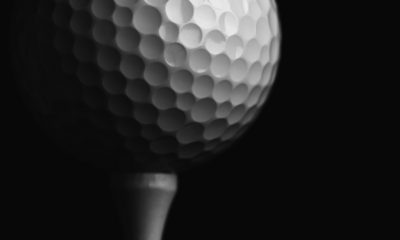

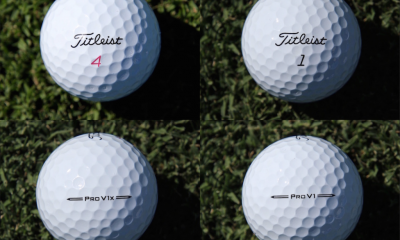

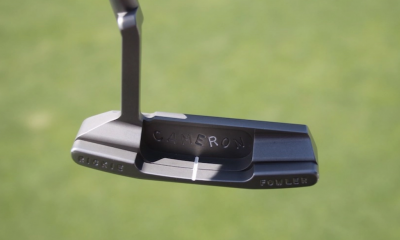









rasel
Oct 2, 2017 at 1:54 am
its a really great idea that you have described here. thanks a lot for this best idea
Joey
Feb 23, 2017 at 2:15 pm
Is it just me or do other people just hate when you are playing with people and they will tell you ball doesn’t matter. I was playing the other day and I bought some b330s golf balls and he was wondering why I bought them instead of Top Flights that are half the price. Does anyone know something smart that i can say back to people who comment on balls that i use?
Miuralovechild
Feb 6, 2017 at 1:20 am
I can’t wait for the Sams Choice ball from Sam’s Club. They won’t let Costco dominate the ball market.
Dan
Feb 12, 2017 at 10:41 pm
more likely it will be an Amazon ball right? I’ve been buying all my golf balls from Amazon for the last year+. It’s only a matter of time before they get the same factory as Costco to make their own “prime” ball.
Eye4Golf-Albuquerque
Feb 1, 2017 at 9:31 pm
I play on city courses 95% of the time and play 3 times a week, so high end premium balls are not a good return on investment. If you play on high end courses you see some improvement if you play to a 6-12 hdcp, higher no help, lower no brainier. Last time I read the average golfer shoots in mid 90’s. I think it’s great to have such a variety of value priced quality balls Snell,Vice, Wilson Staff and others from $12-32 dozen. Duo’s yellow in winter and Kirkland rest of time are my favorites. Finding the right ball is easier and cheaper than golf clubs.
Kyle p
Feb 1, 2017 at 12:05 pm
I’ve read that article countless times with only slight variations over the years with regards to balls and clubs. It comes across as a child writing a report.
I’m asking the editor, please don’t post articles just for the sake of filling up space.
This website has always been knowledgeable and insightful and I hope that resumes in the future.
Stevegp
Feb 1, 2017 at 12:41 am
Interesting summation article. You “use” the golf ball on every shot. The ball you choose is important (IMHO). The golf ball also is the least expensive piece of equipment you purchase and one that can impact every shot, enjoyment of the game, and your performance.
S Hitter
Feb 1, 2017 at 1:28 am
No, the least expensive piece of equipment is the tee that you put your ball on
Jim
Jan 31, 2017 at 5:26 pm
Absolutely time for ‘the official tournament ball’
a barrel full on the range and every player loads their bag with them. Period. Different mfrs can sponsor events and their ‘tour compliant’ ball will be the one used that week.
let the pampered ones cry. They’ll still all have their endorsement deals on the side
george
Jan 31, 2017 at 11:54 am
Well, I’ve still got 10 dz B330-RX in the basement. I guess I’ll have to wait another two months zu select a new and improved ball… 😉
cgasucks
Jan 31, 2017 at 8:30 am
When it comes to buying new tour level quality balls, the KSig gives you the best deal for your hard earned dollars. I will count the days when it will come back (as per their Chairman’s comments).
Tim
Jan 31, 2017 at 6:23 pm
Going a little far calling the KSig a tour level ball…good ball for amateurs yes….you know the Costco ball does not or did not go through all the testing a Prov1 or other tour balls go through right…I think you will find the real threat of the KSig ball is for all the off tour balls all the big boys sell…Who would pay $22 or more for a hard cover ball if you could get a urethane ball for $15 a dozen…that is the real threat
Brian
Jan 31, 2017 at 8:40 pm
Michael Breed, is that you?
Mark
Jan 31, 2017 at 2:42 am
Hopefully more affordable. Kirkland have rocked the boat but you find a lot of golfers who want expensive and would not be seen dead with anything that wasn’t from a premium priced brand. And are off 20 and hit it all over the parish and then spend an inordinate amount of time looking for them. “It’s lost mate, this is where Elephants come to die. Not a chance…these are £3.50 each”….
JuNiOR
Jan 31, 2017 at 12:24 am
Who Makes the Best Golf Balls?
Hands down the Kirkland Signature 4 piece!!!
1. Performance
2. Price
3. Did I say price….$30.00 for 2 DOZEN
Jim
Jan 31, 2017 at 12:39 am
Your talking about an ok ball for the White Tee 15 to 20 handicapper….for a real player, one who makes birdies from the Blue or Back tees the higher end balls are going to be better…why, because the high end balls (Prov1 etc) are built to be and play better…at best with a Kirkland ball your getting a ball with play ability 5 or more years old. Fine for those that just not going to get any better..
Brian
Jan 31, 2017 at 8:43 pm
Is Titleist paying you per post or an hourly rate?
STeve S
Jan 31, 2017 at 8:52 pm
Have you seen the testing? Ksig numbers within experimental error of the 2016 Pro V1. If it’s 5 year old technology that means all the BS about new technology is just that…BS.
SV
Feb 1, 2017 at 9:53 am
A rather snarky comment. Actually a player will do his best with a ball that suits him and they don’t have to be tour level and cost $50 per dozen. Just because someone doesn’t want to pay an exorbitant price for balls doesn’t mean they can’t play. My favorite balls, which unfortunately are no longer available, are the Srixon AD333 and Callaway Diablo HX Tour. By the way, I am 68 years old, play to a 5 handicap and play to it from any set of tees.
MiloTheMarauder
Jan 30, 2017 at 8:33 pm
I’m looking forward to playing the new Chrome soft X, hopefully in Truvis.
Adam
Jan 30, 2017 at 7:01 pm
Hopefully it goes in the hole a lot more and sooner on each hole!
Geoff
Jan 30, 2017 at 1:19 pm
I’ve played the Chromax ball for about 3 years and it simply outperforms other premium balls that I’ve played. They really run out a little more on Drives, approaches and putts. Most players want more distance on their Driver and they often miss greens and putts short. Urethane balls produce more spin of the driver which causes the ball to hook or slice more and stop quickly on a good drive, while the Chromax ball is very straight and picks up a couple of extra yards. On approach shots, the urethane ball will stop and spin back; if most misses are short, you don’t want the ball to spin back. The Chromax ball takes a hop forward and then stops for me. On putts, the urethane ball grips each imperfection on the green and slows down the ball. I hate the putts you leave inches short with the perfect line—that is far less likely to happen with this ball. Pull and hit the same clubs you normally would and hit more greens and hole more putts, it’s really a no-brainer. I’m very happy with the Chromax O.V. ball.
Ian
Jan 31, 2017 at 1:42 pm
who should they make the endorsement check out to?
Geoff
Jan 31, 2017 at 5:39 pm
Ha, me I would think!